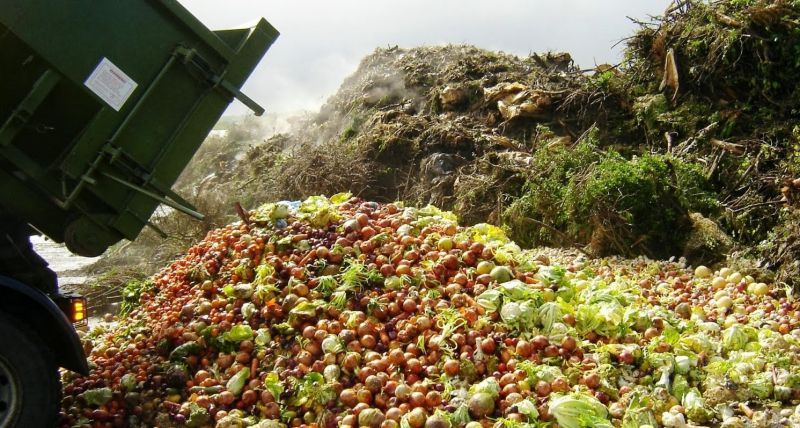By Olivia Capasso || Junior Editor

Photo Courtesy of food navigator.com
According to The Atlantic, each year Americans collectively dispose of an astonishing 60 million tons of produce, making fruits and vegetables the leading occupants of our landfills. Nowhere else in the world is food waste so prevalent, an unfavorable accomplishment we can attribute to the nationally low cost of items and a senseless “aesthetic culture.” American shoppers as a whole have decided that slightly tarnished or discolored produce is never a worthy purchase, a mentality that I, regrettably, can associate with. Social media additionally promotes this ideal on a massive scale; “foodie” accounts on Instagram only showcase the most perfect looking mango or banana, influencing younger generations to select only the produce that most resembles that model. This cycle of careless selectivity leads to hundreds of billions of dollars of perishable food being thrown away each year, food that instead could be made use of in other, more sustainable, ways.
In September of 2015, former President Barack Obama and his administration decided to institute a campaign that would work to significantly reduce food waste in America. According to the Food and Drug Administration (FDA), the standing goal is to cut food waste at both a consumer and retail level in half by 2030. In alliance with the United States Department of Agriculture (USDA) and private, nonprofit, and government organizations, the United States Environmental Protection Agency (EPA) hopes to reach this lofty aim by working towards greater food efficiency, more effective redistribution tactics, and improved recycling. Currently, one in six Americans are in need of pioneer services, such as the Bay Area’s Imperfect Product, to make use of the entirely safe and nutritious produce that is being discarded purely for its imperfect appearance.
The USDA, EPA, and FDA additionally signed the “Winning on Reducing Food Waste Initiative” aimed at joining the agencies in collaboration under a formal agreement. The initiative promotes communication between these government agencies and businesses in the private sector, with an emphasis on educating Americans on the importance of food sustainability. In France, supermarkets have been barred from disposing of any produce, a drastic yet effective move to minimize waste. In the United States people of all ages must understand the importance of the issue and the consequences of our behavior. According to The Washington Post, not only is the disposal of such goods cost inefficient, but the large production of fruits and vegetables that are not even being consumed contributes significantly to greenhouse gas emissions and global warming.
The fact is, the American tendency to prefer aesthetically pleasing produce is not only disruptive to the environment, but wildly irresponsible when considering the number of malnourished individuals in the United States. Organizations such as Feeding America are actively working with distributors, farmers, retailers, and manufacturers to collect as much refused but healthy produce as possible for those in need. Of course, food safety requirements are still in place to maintain a certain standard, and all items must abide by the same rules that govern United States grocery stores and producers.
As we move toward a more sustainable future, it is critical that Americans receive an in depth education on the subject of food waste. Each day, millions of pounds of produce go to waste that could otherwise be donated to those in need, or even composted and used to improve our land and ecosystem. The responsibility lies within the people to acknowledge the shortcomings of food production in America and make more conscious decisions to escape our habits as consumers. Little by little, with both legislative changes and the help of each American, I believe that our nation will reach its goal of reducing food waste in the next decade.
First-year Olivia Capasso is the Junior Editor. Her email is ocapasso@fandm.edu